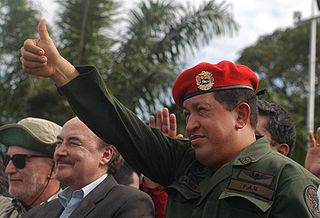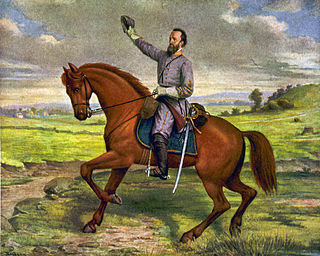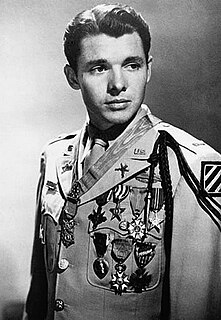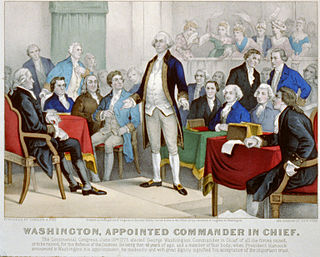 W
WAli ibn Abi Talib took part in all the battles of the Islamic prophet Muhammad's time, except the Battle of Tabuk, as standard bearer. He also led parties of warriors on raids into enemy lands, and was an ambassador. Ali's fame grew with every battle that he was in, due to his courage, valour, and chivalry, as well as the fact that he single-handedly, destroyed many of Arabia's most famous and feared warriors. Muhammad acknowledged him as the greatest warrior of all time.
 W
WThe military career of Benedict Arnold in 1775 and 1776 covers many of the military actions that occurred in the northernmost Thirteen Colonies early in the American Revolutionary War. Arnold began the war as a captain in Connecticut's militia, a position to which he was elected in March 1775. Following the outbreak of hostilities at Lexington and Concord the following month, his company marched northeast to assist in the siege of Boston that followed. Arnold proposed to the Massachusetts Committee of Safety an action to seize Fort Ticonderoga in New York, which he knew was poorly defended. They issued a colonel's commission to him on May 3, 1775, and he immediately rode off to the west, where he arrived at Castleton in the disputed New Hampshire Grants in time to participate with Ethan Allen and his men in the capture of Fort Ticonderoga. He followed up that action with a bold raid on Fort Saint-Jean on the Richelieu River north of Lake Champlain. He then resigned his Massachusetts commission after a command dispute with the head of a detachment of Connecticut militia troops that arrived in June to reinforce Ticonderoga.
 W
WThe military career of Benedict Arnold from 1777 to 1779 was marked by two important events in his career. In July 1777, Arnold was assigned to the Continental Army's Northern Department, where he played pivotal roles in bringing about the failure of British Brigadier Barry St. Leger's siege of Fort Stanwix and the American success in the battles of Saratoga, which fundamentally altered the course of the war.
 W
WThe military career of Benedict Arnold in 1781 consisted of service in the British Army. Arnold had changed sides in September 1780, after his plot was exposed to surrender the key Continental Army outpost at West Point. He spent the rest of 1780 recruiting Loyalists for a new regiment called the American Legion. Arnold was then sent to Virginia with 1,600 men in late December by General Sir Henry Clinton, with instructions to raid Richmond and then establish a strong fortification at Portsmouth.
 W
WMustafa Kemal Atatürk was a field marshal, revolutionary statesman, and founder of the Republic of Turkey as well as its first President. Mustafa Kemal Atatürk's military career explains his life between graduation from Ottoman War College in Istanbul as a lieutenant in 1905 to his resignation from the Ottoman Army on 8 July 1919, as well as his military leadership throughout the subsequent Turkish War of Independence.
 W
WThe 11th century Paramara king Bhoja ruled from his capital at Dhara. The period of his reign is dated approximately 1010 CE to 1055 CE, although some historians believe that he ascended the throne before 1010 CE. Bhoja inherited a kingdom centered around the Malwa region, and made several attempts to expand it varying results. He managed to annex territories as far as northern parts of Konkan, but these territorial gains were short-lived. He fought wars against several of his neighbours, including the Chaulukyas of Gujarat, the Chalukyas of Lata, the Chalukyas of Kalyani, the Chandelas of Jejakabhukti, the Kachchhapaghatas of Gwalior, the Chahamanas of Shakambhari, the Chahamanas of Naddula, and the Kalachuris of Tripuri.
 W
WThe military and political career of Simón Bolívar, which included both formal service in the armies of various revolutionary regimes and actions organized by himself or in collaboration with other exiled patriot leaders during the years from 1811 to 1830, was an important element in the success of the independence wars in South America. Given the unstable political climate during these years, Bolívar and other patriot leaders, such as Santiago Mariño, Manuel Piar, José Francisco Bermúdez and Francisco de Paula Santander often had to go into exile in the Caribbean or nearby areas of Spanish America that at the moment were controlled by those favoring independence, and from there, carry on the struggle. These wars resulted in the creation of several South American states out of the former Spanish colonies, the currently existing Venezuela, Colombia, Ecuador, Peru and Bolivia, and the now defunct Gran Colombia.
 W
WControversy over George W. Bush's military service in the Air National Guard was an issue that first gained widespread public attention during the 2004 presidential campaign. The controversy centered on Texas Air National Guard, why he lost his flight status, and whether he fulfilled the requirements of his military service contract.
 W
WThe military career of Hugo Chávez spans the seventeen years (1975–1992) that the later President of Venezuela spent in the Venezuelan army. Leader of the "Bolivarian Revolution", Chávez is known for his social democratic governance, his promotion of Latin American integration, and his criticisms of neoliberal globalization and United States foreign policy.
 W
WThe military career of Dwight D. Eisenhower began in June 1911, when Eisenhower took the oath as a cadet at the United States Military Academy at West Point. He graduated from West Point and was commissioned as a second lieutenant in the United States Army in June 1915, in the same class as Omar Bradley. He rose through the ranks over the next thirty years and became one of the most important Allied generals of World War II, being promoted to General of the Army in 1944. Eisenhower retired from the military after winning the 1952 presidential election, though his rank as General of the Army was restored by an act of Congress in March 1961.
 W
WThe military career of Francisco Franco Bahamonde began on 29 August 1907, when he took the oath as a cadet at the Spanishy Toledo Infantry Academy. On 13 July 1910 he graduated from Infantry Academy and was commissioned as a second lieutenant in the Spanish Army, in the same promotion as Juan Yagüe, Emilio Esteban Infantes, Camilo Alonso Vega, José Asensio, Lisardo Doval Bravo and Eduardo Sáenz de Buruaga. He rose through the ranks over the next twenty years and became one of the most important Spanish commissioned officers of the Rif War. On 31 January 1926 Franco, aged 33, became the youngest general in all of Europe. In January 1928 he was then chosen to direct the newly formed General Military Academy in Zaragoza. From 19 May 1935 to 23 February 1936, Franco was elevated to Chief of Army Staff before the 1936 election moved the leftist Popular Front into power, relegating him to the Canary Islands as Commander of the Archipelago Force. After initial reluctance, he joined the July 1936 military coup which, after failing to take Spain, sparked the Spanish Civil War.
 W
WAfter the Civil War, Ulysses S. Grant spent four years as head of the United States Army in peacetime. With his defeat of Robert E. Lee and the Confederacy, Grant was the most popular man in the country. As the Civil War ended Grant turned his attention to the Plains in the American West where there was numerous conflicts between white settlers, railroads, and Native Americans that resulted in wars between the Natives and the U.S. military. While the attempted Fenian invasion of Canada and French intervention in Mexico took some of his time, Grant's biggest focus was on Reconstruction of the defeated Southern states. Grant found himself caught between President Andrew Johnson, who wanted leniency to the South and a continuation of the social structure there, and the Radical Republicans in Congress, who wanted harsher punishment to rebel leaders and more government assistance to the freed slaves. Grant preserved his popularity and authority throughout the crisis that culminated in Johnson's impeachment. In 1868, the Republicans nominated Grant for president, and he won easily over his Democratic challenger.
 W
WUlysses S. Grant was the first born son of Jesse Root Grant and Hannah Simpson Grant. This article lends itself to the story of this future general's ancestry, birth, and early career in and out of the United States army from 1822 to 1861. Grant was born in Point Pleasant, Ohio and he was educated in both private and public schools or academies and was later known to be an avid reader. Grant was raised as a Methodist, but uncommon for his time, he was not baptized or forced to attend church by his parents. Growing up in a middle-class family and supported by his father's tanneries, he sought a different career in the military. He was appointed to West Point by Ohio Congressman Thomas L. Hamer. It was Hamer who gave Grant the name Ulysses S. Grant when Grant entered West Point as a plebe in 1839. After four years at West Point, he was stationed in Missouri, where he met his future wife, Julia Dent. In 1846, Grant served in the Mexican–American War, where he was brevetted for bravery. There he fought in Mexico and learned under two commanders, Zachary Taylor and Winfield Scott. Upon his return to the United States, he married Julia and started a family.
 W
WThe military career of Adolf Hitler can be divided into two distinct portions of Adolf Hitler's life. Mainly, the period during World War I when Hitler served as a Gefreiter in the Bavarian Army, and the era of World War II when Hitler served as the Supreme Commander-in-Chief of the Wehrmacht through his position as Führer of Nazi Germany.
 W
WThe military career of L. Ron Hubbard saw the future founder of Scientology serving in the United States Armed Forces as a member of the Marine Corps Reserve and, between 1941–50, the Navy Reserve. He saw active service between 1941–45, during World War II, as a naval Lieutenant and later as a Lieutenant. After the war he was mustered out of active service and resigned his commission in 1950.
 W
WStonewall Jackson’s military career consists of a combination of various brevet, temporary, and permanent appointments in no less than five different military organizations.
 W
WThis is the service summary of Douglas MacArthur, a General in the United States Army, who began his career in 1899 and served in three major military conflicts, going on to hold the highest military offices of both the United States and the Philippines.
 W
WThe military career of Muhammad, the final prophet of Islam, encompasses several expeditions and battles throughout the Hejaz region in the western Arabian Peninsula which took place in the final ten years of his life, from 622 to 632. His primary campaign was against his own tribe in Mecca, the Quraysh. Muhammad proclaimed prophethood around 610 and later migrated to Medina after being persecuted by the Quraysh in 622. After several battles against the Quraysh, Muhammad conquered Mecca in 629, ending his campaign against the tribe.
 W
WThe military career of Audie Murphy encompassed two separate careers. His U. S. Army service covered nine World War II campaigns fought by the 3rd Infantry Division: Tunisia, Sicily, Naples-Foggia, Anzio, Rome-Arno, Southern France, Ardennes-Alsace, Rhineland and Central Europe. He lied about his age to enlist in the United States Army in 1942. Before his 20th birthday he had earned every Army combat award for valor available during his period of service and had risen to the rank of first lieutenant. On the day he was awarded the Medal of Honor for his January 1945 actions at the Colmar Pocket in France, he was considered to be America's most decorated World War II soldier and received national recognition as such when Life magazine made him their cover story.
 W
WThe military career of Napoleon Bonaparte spanned over 20 years. As emperor, he led the French armies in the Napoleonic Wars. Widely regarded as a military genius and one of the finest commanders in history, his wars and campaigns have been studied at military schools worldwide. He fought more than 70 battles, losing only eight, mostly at the end. The great French dominion collapsed rapidly after the disastrous invasion of Russia in 1812. Napoleon was defeated in 1814 and exiled to the island of Elba, before returning and was finally defeated in 1815 at Waterloo. He spent his remaining days in British custody on the remote island of St. Helena.
 W
WJosé de San Martín was an Argentine-born general who moved to Spain during his childhood. He served in the Spanish army from 1789 to 1811. During that time he fought among Spanish forces under siege by Moors, in a naval battle against the British navy and in the Peninsular War. In 1795 he was promoted to second lieutenant and during the Peninsular War he reached the rank of Lieutenant Colonel. However, San Martin ended up resigning his position and moved briefly to Britain, and then to Buenos Aries. In 1811, he participated in the Spanish American wars of independence.
 W
WThe future Rhodesian Prime Minister Ian Smith served in the Royal Air Force (RAF) during the Second World War, interrupting his studies at Rhodes University in South Africa to join up in 1941. Following a year's pilot instruction in Southern Rhodesia under the Empire Air Training Scheme, he was posted to No. 237 (Rhodesia) Squadron, then stationed in the Middle East, in late 1942. Smith received six weeks' operational training in the Levant, then entered active service as a pilot officer in Iran and Iraq. No. 237 Squadron, which had operated in the Western Desert from 1941 to early 1942, returned to that front in March 1943. Smith flew in the Western Desert until October that year, when a crash during a night takeoff resulted in serious injuries, including facial disfigurements and a broken jaw. Following reconstructive plastic surgery to his face, other operations and five months' convalescence, Smith rejoined No. 237 Squadron in Corsica in May 1944. While there, he attained his highest rank, flight lieutenant.
 W
WGeorge Washington commanded the Continental Army in the American Revolutionary War (1775–1783). After serving as President of the United States, he briefly was in charge of a new army in 1798.
 W
WThe military career of George Washington spanned over forty years of service. Washington's service can be broken into three periods, French and Indian War, American Revolutionary War, and the Quasi-War with France, with service in three different armed forces.
 W
WArthur Wellesley, 1st Duke of Wellington,, was one of the leading British military and political figures of the 19th century. Often referred to only as "The Duke of Wellington", he led a successful military career in India during the Fourth Anglo–Mysore War (1798–99) and the Second Anglo-Maratha War (1803–1805), and in Europe during the Napoleonic Wars (1803–1815).